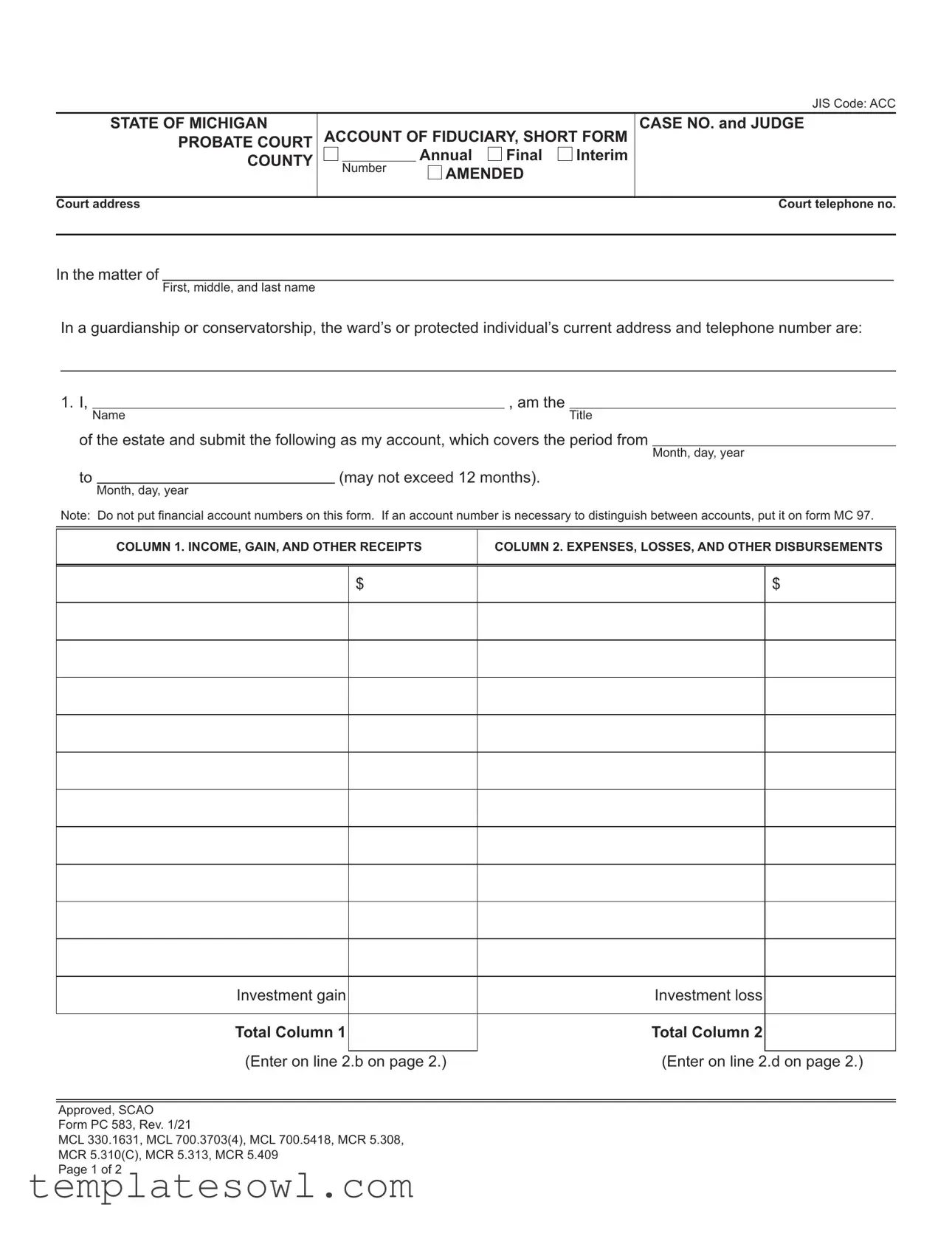What is the PC 583 form used for?
The PC 583 form, also known as the Account of Fiduciary, Short Form, is used in the State of Michigan for fiduciaries managing a guardianship or conservatorship. This form allows fiduciaries to report the financial activity of the estate, including income, expenses, and the balance of assets during a specified period. It is essential for maintaining transparency and accountability in the management of assets that belong to a protected individual or ward.
How often do I need to file the PC 583 form?
The PC 583 form must be filed at least annually, or whenever an interim or final accounting is needed. Each accounting period reported cannot exceed 12 months. Ensuring timely and accurate submissions is crucial for fulfilling fiduciary responsibilities and complying with legal requirements.
What information do I need when filling out the PC 583 form?
You will need to gather financial information for the reporting period, including all income, receipts, expenses, and disbursements. Specifically, the form requires details about gains and losses, itemized assets at the end of the accounting period, and any fees incurred during that time. Be sure to avoid including financial account numbers on the form itself; if necessary, those details should be recorded on a separate form.
Is there a fee for filing the PC 583 form?
There is no filing fee for submitting the PC 583 form itself. However, if you are an interested party wishing to file an objection to the account, a $20.00 filing fee is required at that time. Keep in mind that this fee is separate from any potential costs associated with legal representation or other professional services.
What happens if I do not file the PC 583 form?
Failing to file the PC 583 form can lead to significant consequences. This action may leave the fiduciary open to legal challenges or accusations of mismanagement and could jeopardize the well-being of the ward or protected individual. To maintain compliance with probate court requirements, it is essential to submit the form on time.
How do I handle objections to the PC 583 form?
If you have objections to the account presented in the PC 583 form, you should file a written objection with the court. Make sure to do this before the court allows the account. Remember, the objection must be served to the fiduciary or their attorney to ensure that all parties are informed. The court will then typically schedule a hearing to address any unresolved objections.
Are there specific documentation requirements associated with the PC 583 form?
Yes, along with the PC 583 form, fiduciaries must present corresponding financial institution statements or file a verification of funds, which reflects the value of all liquid assets. These documents need to be dated within 30 days after the accounting period ends. This requirement helps ensure that the reported figures are accurate and verifiable.
Can I seek help when filling out the PC 583 form?
Absolutely. If you find the process overwhelming or have questions about specific aspects of the form, seeking assistance from a legal professional is advisable. They can provide valuable guidance to help ensure that all required information is accurately reported and that your obligations as a fiduciary are met. You are not alone in this process, and support is available.


 AMENDED
AMENDED
 This account is not being filed with the court.
This account is not being filed with the court. My fiduciary fees incurred during this accounting period (including fees that have already been approved and/or paid
My fiduciary fees incurred during this accounting period (including fees that have already been approved and/or paid